
ProtEX-MAX PD8-154 & 158 Alarm Annunciators
Instruction Manual
PRECISION DIGITAL CORPORATION
233 South Street • Hopkinton MA 01748 USA
Tel (800) 343-1001 • Fax (508) 655-8990
www.predig.com
Alarm Annunciators
• 8 Field Selectable Sequences
• All Common ISA Sequences
• 4 or 8-Point (Channel) Monitoring
• Free Replaceable Message Labels
• Type 4X, NEMA 4X, IP65 Front
• Universal Power Supply 85-265 VAC
• 12-36 VDC/12-24 VAC Power Option
• 2 SPDT Relays
• 24 VDC Isolated Power Supply (AC Models)
• Multiple-Unit First-Out Indication
• 3 Pushbutton Operation
• Sunlight Readable Indication

ProtEX-MAX PD8-154 & 158 Alarm Annunciators Instruction Manual
2
Disclaimer
The information contained in this document is subject to change without notice. Precision Digital
makes no representations or warranties with respect to the contents hereof, and specifically disclaims
any implied warranties of merchantability or fitness for a particular purpose.
CAUTION: Read complete instructions prior
to installation and operation of the meter.
WARNING: Risk of electric
shock or personal injury.
Warning!
• This product is not recommended for life support applications or applications
where malfunctioning could result in personal injury or property loss. Anyone
using this product for such applications does so at his/her own risk. Precision
Digital Corporation shall not be held liable for damages resulting from such
improper use.
• Failure to follow installation guidelines could result in death or serious injury.
Make sure only qualified personnel perform the installation.
• Never remove the instrument cover in explosive environments when the circuit is
live.
• Cover must be fully engaged to meet flameproof/explosion-proof requirements.
• Information in this manual supersedes all enclosure, compliance, and agency
approval information included in additional product manuals included with this
product.
Limited Warranty
Precision Digital Corporation warrants this product against defects in material or workmanship for the
specified period under “Specifications” from the date of shipment from the factory. Precision Digital’s
liability under this limited warranty shall not exceed the purchase value, repair, or replacement of the
defective unit.
Registered Trademarks
All trademarks mentioned in this document are the property of their respective owners.
© 2018-2019 Precision Digital Corporation. All rights reserved.
!

ProtEX-MAX PD8-154 & 158 Alarm Annunciators Instruction Manual
3
Table of Contents
Table of Contents ---------------------------------- 3
Table of Figures ------------------------------------ 3
Introduction ------------------------------------------ 4
Ordering Information ------------------------------ 4
Quick Setup Guide --------------------------------- 4
Sequence Selection ----------------------------------- 4
NO/NC Inputs-------------------------------------------- 4
Basic Connections ------------------------------------ 5
Specifications --------------------------------------- 6
General ---------------------------------------------------- 6
Inputs ------------------------------------------------------ 6
Relays ----------------------------------------------------- 6
Product Ratings and Approvals ------------------ 7
Compliance Information ------------------------- 8
Safety Information --------------------------------- 9
Installation -------------------------------------------- 9
Unpacking ---------------------------------------------- 10
Pre-Installed Conduit/Stopping Plug ---------- 10
Mounting ----------------------------------------------- 10
Cover Jam Screw ------------------------------------ 10
Connections ------------------------------------------- 11
Required & Factory Wired Connections ------ 11
Connector Labeling -------------------------------- 14
Power Connections -------------------------------- 14
Signal Connections -------------------------------- 14
Relays and 24 V Output Connections --------- 15
Switching Inductive Loads ----------------------- 16
External Pushbutton Connections ------------- 17
Multiple Unit First-Out Indication Connections
---------------------------------------------------------- 17
Setup and Programming ------------------------18
Overview ------------------------------------------------ 18
SafeTouch Buttons ---------------------------------- 18
Front Panel Pushbuttons and Status LED
Indicators ----------------------------------------------- 19
Full Function Test ----------------------------------- 19
Multiple Unit First-Out Indication --------------- 19
Shared Front Panel Buttons---------------------- 20
Annunciator Sequence Selection --------------- 20
Sequence Programming -------------------------- 20
Sequence Descriptions --------------------------- 21
Normally Open/Normally Closed Input Setup
------------------------------------------------------------- 21
Programming NO/NC Inputs --------------------- 21
NO/NC Programming Example ----------------- 22
Relay Operation -------------------------------------- 23
Relay 1 Operation ---------------------------------- 23
Relay 2 Operation ---------------------------------- 23
Relay Fail-Safe -------------------------------------- 23
Programming Relay Fail-Safe ------------------- 23
Relay Fail-Safe Programming Example------- 24
Relay Operation Overview ----------------------- 25
Audible Horn Enable/Disable -------------------- 25
Enabling/Disabling Silence Option ------------- 26
No Lock-In Sequence Option -------------------- 26
Reset to Factory Defaults ------------------------- 27
Service ----------------------------------------------- 27
Mounting Dimensions -------------------------- 28
Troubleshooting ---------------------------------- 28
Troubleshooting Tips ------------------------------- 28
Full Sequence Descriptions------------------- 29
Features ---------------------------------------------- 29
Sequence Condition Descriptions -------------- 29
LED Condition Descriptions ---------------------- 29
ISA Sequence A -------------------------------------- 30
Relay Operation -------------------------------------- 30
ISA Sequence F2A ----------------------------------- 31
ISA Sequence F1A ----------------------------------- 32
ISA Sequence F3A ----------------------------------- 33
Sequence F3A Switch Positions ---------------- 33
Input Follower Indication -------------------------- 35
ISA Sequence M -------------------------------------- 35
ISA Sequence F1M----------------------------------- 36
ISA Sequence F2M----------------------------------- 37
EU Declaration of Conformity ---------------- 39
Table of Figures
Figure 1: Integrated Vigilante II (PD8-154-6 &
PD8-158-6) Required Connections ............. 12
Figure 2: Integrated Vigilante II (PD8-154-7 &
PD8-158-7) Required Connections ............. 13
Figure 3. Connector Labeling for PD158-6R2-1 14
Figure 4. Power Connections............................. 14
Figure 5. NO/NC Contact Inputs ........................ 14
Figure 6. Open Collector NPN Transistor Inputs
....................................................................... 15
Figure 7. Relay & 24 V Output Connections ..... 15
Figure 8. AC and DC Loads Protection ............. 16
Figure 9. Low Voltage DC Loads Protection .... 16
Figure 10. External Pushbutton Connections .. 17
Figure 11. System with Multiple Units Share
First-Out ........................................................ 17
Figure 12. Shared Pushbutton Connections .... 20
Figure 13. DIP Switch Location ......................... 20
Figure 14: Enclosure Dimensions – Front View
....................................................................... 28
Figure 15: Enclosure Dimensions – Side Cross
Section View ................................................. 28

ProtEX-MAX PD8-154 & 158 Alarm Annunciators Instruction Manual
4
Introduction
The ProtEX-MAX PD8-150 offers all the functionality of the Vigilante II PD150 as a fully FM, CSA, ATEX,
and IECEx approved explosion-proof product. It provides alarming and monitoring capabilities for all of
your level, pressure, flow, and other process switches. These explosion-proof alarm annunciators are
available in two models; the PD8-154 has four (4) inputs and the PD8-158 has eight (8) inputs. Each
model accepts inputs from relays, float switches, digital outputs, and many other discrete (on/off) devices.
They can be field programmed for all common ISA alarm sequences including first out indication and
provide alarm signaling through front panel LEDs and a built in audible horn. Additional audible devices
may be triggered through the use of relays. The silence, acknowledge, and reset functions can be
operated without opening the housing by using the built-in SafeTouch through-glass buttons. Custom
printed message labels can be included with your order at no additional charge.
Ordering Information
85-265 VAC* Model
12-36 VDC* Model
Description
PD8-154-6R2-1
PD8-154-7R2-0
Vigilante
®
II 4-Point Annunciator
PD8-158-6R2-1
PD8-158-7R2-0
Vigilante
®
II 8-Point Annunciator
*All models may be powered from AC or DC, see Specifications for details.
WARNING - Cancer and Reproductive Harm - www.P65Warnings.ca.gov
Accessories
Model
Description
PDX6901
Snubber 0.01μF, 470Ω, Flexible Leads
Quick Setup Guide
The following overview details how to set up the annunciator for most common uses.
Sequence Selection
The two most common sequences are ISA A and ISA
F2A. Select the sequence using the four-position switch
on the rear of the unit above the signal connector. For
complete sequence details, see page 29.
NO/NC Inputs
Each input can be set for normally open (NO) or normally closed (NC) contacts. Each input channel is
programmed individually. The default setting is for all inputs to be NO.
To set inputs to NC:
1. Press and hold ACK and RESET for 3 seconds until all LEDs cycle.
2. Press ACK within 3 seconds of release. All LEDs will blink. If ACK is not pressed within 3
seconds, the unit will return to run mode.
3. Press ACK again within 3 seconds of release. If ACK is not pressed within 3 seconds, the unit
will return to run mode.
The LED for the channel being programmed will display brightly on or off. All other channel indication
LEDs will be at low intensity to indicate programming mode.
4. Press the RESET pushbutton to turn LED 1 off for a NO input, or on for a NC input for channel 1.
5. Press ACK to accept the input type and program channel 2.
6. Repeat steps 4 and 5 for all input channels.
7. Press and hold ACK for five seconds to return to normal operation with the programmed input
types.
ISA A
ISA F2A

ProtEX-MAX PD8-154 & 158 Alarm Annunciators Instruction Manual
5
Basic Connections
All connections are made to removable screw terminal connectors located at the rear of the
instrument. For complete connection details, see page 14.
Use copper wire with 60°C or 60/75°C insulation for all
line voltage connections. Observe all safety regulations.
Electrical wiring should be performed in accordance with
all applicable national, state, and local codes to prevent
damage to the instrument and ensure personnel safety.
Connector Labeling
The connectors label, affixed to the instrument, shows the location of all connectors available with
requested configuration. See Figure 2, page 14.
Power Connections
Power connections are made to a two-terminal connector labeled POWER. The instrument will operate
regardless of DC polarity connection. The + and - symbols are only a suggested wiring convention.
Signal Connections
Input signal connections are made to a 14-terminal connector at terminals labeled INPUT CHANNELS.
The COM (common) terminal is the return for all input channels.
Normally Open (NO) or Normally Closed (NC) Switches
All channels are initially set for normally open contacts. Each contact is wired across an input channel and
common.
Relays and 24 V Output Connections
Relay connections are made to a six-terminal connector labeled RELAY1, RELAY2. The COM (common)
terminals of the relays should not be confused with the COM (common) terminal of the signal connector.
The 24 VDC output is available at the connector labeled 24V OUT, next to the relays connector.
Additional Information
For additional setup and wiring information, please see the complete details further in this manual.

ProtEX-MAX PD8-154 & 158 Alarm Annunciators Instruction Manual
6
Specifications
Except where noted all specifications apply to operation at +25°C.
General
Display
PD8-154; Four red LED channel/point
indicators.
PD8-158; Eight red LED channel/point
indicators.
One green LED power indicator.
Alarm
Messages
Custom printed adhesive clear labels.
Area: PD8-154, 1.25" x .60" (32 mm x 15
mm), 4 messages
PD8-158, 1.25" x .25" (32 mm x 6
mm), 8 messages
User specified size and length, up to 4 lines
(PD8-154) or 2 lines (PD8-158) of 14
characters of size 9 fonts.
Programming
Methods
Rear 4-position switch for sequence
selection and horn operation. Three front
panel pushbuttons for NO/NC input
selection, sequence options, and sequence
operation.
Audible Alarm
85 dB internal horn. The use of an external
explosion-proof horn is recommended due
to the internal horn's audibility being
dampened by the explosion-proof enclosure.
Noise Filter
40 ms debounce on inputs (including SIL,
ACK, and RST).
Shared First-
Out Systems
1 ms unit-to-unit delay. Maximum of 200
units in the shared first-out system.
Non-Volatile
Memory
All programmed settings are stored in non-
volatile memory for a minimum of ten years
if power is lost.
Power
Options
85-265 VAC, 50/60 Hz
90-265 VDC, 20 W max
or 12-36 VDC, 12-24 VAC, 6 W max
Fuse
Required external fuse: UL Recognized, 5 A
max, slow blow. Up to 6 annunciators may
share one 5 A fuse
Isolated
Power Supply
24 VDC
±
10% @ 200 mA max
Standard on 85-265 VAC powered units
only.
Isolation
4 kV input/output-to-power line.
Overvoltage
Category
Installation Overvoltage Category II:
Local level with smaller transient
overvoltages than Installation Overvoltage
Category III
Environmental
Operating temperature range: -40 to 65°C
Storage temperature range: -40 to 85°C
Relative humidity: 0 to 90% non-condensing
Connections
Screw terminals accept 12 to 22 AWG wire
Enclosure
Explosion-proof die cast aluminum with
glass window, corrosion resistant epoxy
coating, color: blue.
NEMA 4X, 7, & 9, IP68.
Default conduit connections: Four ¾" NPT
threaded conduit openings and two ¾" NPT
metal conduit plugs with 12 mm hex key
fitting installed. Additional conduit opening
configurations may be available; verify
quantity and sizes on specific device
labeling during installation.
Mounting
Four slotted flanges for wall mounting or
NPS 1½" to 2½" or DN 40 to 65 mm pipe
mounting. See Mounting Dimensions on
page 28.
Tightening
Torque
Screw terminal connectors: 5 lb-in (0.56
Nm)
Overall
Dimensions
6.42" x 7.97" x 8.47" (W x H x D)
(163 mm x 202 mm x 215 mm)
Approximate
Shipping
Weight
16.0 lbs (7.26 kg)
Warranty
3 years parts & labor
Extended
Warranty
1 or 2 years, refer to the Price List for
details.
Inputs
Input Types
NO or NC switches: No external excitation
required
Open collector transistor (NPN):
Open circuit voltage approximately 3.3 VDC
Logic Levels: LOW = 0 to 0.9 VDC
HIGH = 2.4 to 28 VDC
Update Rate
41 ms following alarm state; 1 ms for alarm
state clear
Sequences
Input follower, ISA Sequences A, F1A, F2A,
F3A, M, F1M, F2M and F3M per ISA
Standard ISA-18.1-1979 R2004.
Sequence
Options
A, F1A, F2A, F3A, M, F1M, F2M, and input
follower with selectable options -1 (silence
pushbutton), -4 (no lock-in), and -6 (no horn)
per ISA Standard ISA-18.1-1979 R2004.
Relays
Rating
2 SPDT (Form C); rated 3 A @ 30 VDC or
3 A @ 250 VAC resistive load; 1/14 HP @
125/250 VAC for inductive loads
Electrical
Noise
Suppression
A suppressor (snubber) should be
connected to each relay contact switching
inductive loads to prevent
disruption to the microprocessor’s operation.
Recommended suppressor value:
0.01 µF/470
Ω
, 250 VAC (PDX6901).
Relay
Operation
Relay 1: Alarm state until alarm is
acknowledged.
Relay 2: Alarm state while any channel
indicating alarm condition.
Fail-Safe
Operation
Programmable
Independent for each relay
Note: In fail-safe mode, relay coil is
energized in non-alarm condition. In case of
power failure, relay will go to alarm state.

ProtEX-MAX PD8-154 & 158 Alarm Annunciators Instruction Manual
7
Product Ratings and Approvals
FM
Enclosure: Type 4X; IP66
Class I, Division 1, Groups B, C, D
Class II, Division 1, Groups E, F, G
Class III, Division 1, T5/T6
Class I, Zone 1, AEx d, IIC Gb T5/T6
Zone 21, AEx tb IIIC T90°C; Ta -40°C to +65°C
T6 Ta = -40°C to +60°C; T5 Ta = -40°C to +65°C
Certificate Number: 3047283
CSA
Class I, Division 1, Groups B, C, D
Class II, Division 1, Groups E, F, G
Class III, Division 1
Class I Zone 1 Ex d IIC
Zone 21 Ex tb IIIC T90°C
-40°C < Tamb. < +60° C; Temperature Code T6
-40°C < Tamb. < +65° C; Temperature Code T5
Enclosure Type 4X & IP66
Certificate Number: 2531731
ATEX
II 2 G D
Ex d IIC T* Gb
Ex tb IIIC T90°C Db IP68
Ta = -40°C to +*°C
*T6 = -40°C to +60°C
*T5 = -40°C to +65°C
Certificate number: Sira 12ATEX1182
IECEx
Ex d IIC T* Gb
Ex tb IIIC T90°C Db IP68
Ta = -40°C to +*°C
*T6 = -40°C to +60°C
*T5 = -40°C to +65°C
Certificate Number: IECEx SIR 12.0073
Special Conditions for Safe Use:
Use suitably certified and dimensioned cable entry device and/or plug. The equipment shall be
installed such that the supply cable is protected from mechanical damage. The cable shall not
be subjected to tension or torque. If the cable is to be terminated within an explosive
atmosphere, then appropriate protection of the free end of the cable shall be provided. Cable
must be suitable for 90°C.
Year of Construction
This information is contained within the serial number with the first four digits representing the
year and month in the YYMM format.
For European Community: The ProtEX-MAX must be installed in accordance with the ATEX
directive 94/9/EC, and the product certificate Sira 12ATEX1182.

ProtEX-MAX PD8-154 & 158 Alarm Annunciators Instruction Manual
8
Compliance Information
Safety
UL Listed
USA and Canada
UL 508 Industrial Control Equipment
UL File Number
E160849
Front Panel
UL Type 4X, NEMA 4X, IP65; panel gasket provided
Low Voltage
Directive
EN 61010-1:2010
Safety requirements for measurement, control, and laboratory use
Electromagnetic Compatibility
Emissions
EN 55022:2010
Class A ITE emissions requirements
Radiated
Emissions
Class A
AC Mains
Conducted
Emissions
Class A
Immunity
EN 61326-1:2013
Measurement, control, and laboratory equipment
EN 61000-6-2:2005
EMC heavy industrial generic immunity standard
RFI - Amplitude
Modulated
80 -1000 MHz 10 V/m 80% AM (1 kHz)
1.4 - 2.0 GHz 3 V/m 80% AM (1 kHz)
2.0 - 2.7 GHz 1 V/m 80% AM (1 kHz)
Electrical Fast
Transients
±2kV AC mains, ±1kV other
Electrostatic
Discharge
±4kV contact, ±8kV air
RFI - Conducted
10V, 0.15-80 MHz, 1kHz 80% AM
AC Surge
±2kV Common, ±1kV Differential
Surge
1KV (CM)
Power-Frequency
Magnetic Field
30 A/m 70%V for 0.5 period
Voltage Dips 40%V for 5 & 50 periods
70%V for 25 periods
Voltage
Interruptions
<5%V for 250 periods

ProtEX-MAX PD8-154 & 158 Alarm Annunciators Instruction Manual
9
Safety Information
WARNINGS
• Read complete instructions prior to installation and operation of the instrument.
• Installation and service should be performed only by trained service personnel. Service
requiring replacement of internal sub-components must be performed at the factory.
• Disconnect from supply before opening enclosure. Keep cover tight while circuits are alive.
Conduit seals must be installed within 18" (450mm) of the enclosure or within 2" (50mm) for
Zone installations.
• Verify that the operating atmosphere of the instrument is consistent with the appropriate
hazardous locations certifications.
• If the instrument is installed in a high voltage environment and a fault or installation error
occurs, high voltage may be present on any lead
• Read all product labels completely and follow all instructions and requirements listed on the
labels for installation or service.
Installation
Install in accordance with applicable local and national regulations (e.g. NEC).
For Installation in USA: The ProtEX-MAX must be installed in accordance with the National Electrical
Code (NEC) NFPA 70.
For Installation in Canada: The ProtEX-MAX must be installed in accordance with the Canadian
Electrical Code CSA 22.1. All power supplies below 36 V and input circuits must be derived from a CSA
Approved Class 2 source.
For European Community: The ProtEX-MAX must be installed in accordance with the ATEX directive
94/9/EC and the product certificate Sira 12ATEX1182.
WARNING
Disconnect from supply before opening enclosure. Keep
cover tight while circuits are alive. Conduit seals must be
installed within 18" (450mm) of the enclosure or within 2"
(50mm) for Zone installations.
Wiring connectors are accessed by opening the enclosure. To access electrical connectors, remove the 2
captive screws and then remove the electronics module. Connectors are on the rear of the electronics
module.

ProtEX-MAX PD8-154 & 158 Alarm Annunciators Instruction Manual
10
Unpacking
Remove the instrument from packing box. Inspect the packaging and contents for damage. Report
damages, if any, to the carrier.
If any part is missing or the instrument malfunctions, please contact your supplier or the factory for
assistance.
Pre-Installed Conduit/Stopping Plug
The PD8-158 is supplied with two pre-installed conduit plugs for installations that do not require the use of
all conduit entries. The conduit/stopping plugs include an internal 12mm hexagonal socket recess for
removal. The pre-installed plugs and their installation are included in the hazardous area approvals for
the PD8 Series enclosure.
WARNING
In hazardous areas, conduit and conduit/stopping plugs require
the application of non-setting (solvent free) thread sealant. It is
critical that all relevant hazardous area guidelines be followed
for the installation or replacement of conduit or plugs.
Mounting
The ProtEX-MAX has four slotted mounting flanges that should be used for pipe mounting or wall
mounting. Refer to Mounting Dimensions, page 28 for details.
WARNING
Do not attempt to loosen or remove flange bolts
while the instrument is in service.
Cover Jam Screw
The cover jam screw should be properly installed once the instrument has been wired and tested in a
safe environment. The cover jam screw is intended to prevent the removal of the instrument cover in a
flameproof environment without the use of tools. Using a M2 hex wrench, turn the screw clockwise until
the screw contacts the aluminum enclosure. Turn the screw an additional 1/4 to 1/2 turn to secure the
cover. Caution: Excess torque may damage the threads and/or wrench.

ProtEX-MAX PD8-154 & 158 Alarm Annunciators Instruction Manual
11
Connections
WARNINGS
• Static electricity can damage sensitive components.
• Observe safe handling precautions for static-sensitive
components.
• Use proper grounding procedures/codes.
• If the instrument is installed in a high voltage environment
and a fault or installation error occurs, high voltage may be
present on any lead or terminal.
• Follow all fusing and wiring precautions requirements for
the instrument integrated to the PD8 Series model number
being connected.
To access the connectors, remove the enclosure cover and unscrew the two captive screws that fasten
the electronics module. Signal connections are made to de-pluggable connectors on the back of the
electronics module.
Some connectors may be provided already connected. These connections are required for proper
operation of the ProtEX-MAX, and should not be removed unless instructed to by this manual.
Wires marked as being used for testing purposes should be removed.
Grounding connections are made to the two ground screws provided on the base – one internal and one
external.
After all connections have been completed and verified, apply power to the unit.
Required & Factory Wired Connections
The ProtEX-MAX comes with several pre-wired connections. These connections are detailed on the
following pages, and must be maintained in order for the instrument to function properly.
For details on the required wiring to maintain basic ProtEX-MAX functions, refer to the appropriate section
for the specific ProtEX-MAX model number.
WARNING
Observe all safety regulations. Electrical wiring should be
performed in accordance with all agency requirements and
applicable national, state, and local codes to prevent
damage to the meter and ensure personnel safety.

ProtEX-MAX PD8-154 & 158 Alarm Annunciators Instruction Manual
12
Required Connections on PD8-154-6 and PD8-158-6 Series Models
ProtEX-MAX units with Vigilante II integrated functionality have two factory wired connectors. Four wires
connect the remote switch inputs of the annunciator. Two wires connect the DC power supply on the main
meter electronics to the ProtEX-MAX connector board. These must remain connected as shown for the
SafeTouch Buttons to function on these models.
NOTICE
The connections described in this section must
remain connected for the SafeTouch buttons to
function.
Figure 1: Integrated Vigilante II (PD8-154-6 & PD8-158-6) Required Connections
!

ProtEX-MAX PD8-154 & 158 Alarm Annunciators Instruction Manual
13
Required Connections on PD8-154-7 and PD8-158-7 Series Models
Low voltage PD8-154-7 and PD8-158-7 models require low voltage power to be supplied to the power
supply connector on the ProtEX-MAX connector board as well as to the integrated Vigilante II
connections as described in the Vigilante II Instruction Manual.
In addition, four wires connect the remote switch inputs of the annunciator to the ProtEX-MAX connector
board. These wires must remain connected for the SafeTouch buttons to function.
NOTICE
The connections described in this section must
remain connected for the SafeTouch buttons to
function.
Figure 2: Integrated Vigilante II (PD8-154-7 & PD8-158-7) Required Connections
!

ProtEX-MAX PD8-154 & 158 Alarm Annunciators Instruction Manual
14
Connector Labeling
The connectors label, affixed to the instrument, shows the location of all connectors available with
requested configuration.
24V OUT
DW1837
POWER
INPUT CHANNELS
6 58 7 4
C NONO NC NC C
RELAY2 RELAY1
P+ P-
+
2 13 COM ACK RST
1 2 43
FI FO
OFF
ON
SIL
Figure 3. Connector Labeling for PD158-6R2-1
Power Connections
Power connections are made to a two-terminal connector labeled POWER on Figure 3. The instrument
will operate regardless of DC polarity connection. The + and - symbols are only a suggested wiring
convention.
AC or DC
POWER
Recommended External Fuse:
5 A max, Slow Blow
POWER CONNECTOR
+ -
Figure 4. Power Connections
Signal Connections
Input signal connections are made to a 14-terminal connector at terminals labeled INPUT CHANNELS on
Figure 3. The COM (common) terminal is the return for all types of input signals.
Normally Open (NO) or Normally Closed (NC) Switches
The following figure shows an example of normally open or normally closed contact inputs.
Programming a channel for a normally open or normally closed contact is done with the front panel
pushbuttons (see page 21). All channels are initially set for normally open contacts. Each contact is wired
across an input channel and common.
COM
SIGNAL CONNECTOR
CH3
CH1CH2
CH4
NO
CONTACT
NC
CONTACT
Figure 5. NO/NC Contact Inputs

ProtEX-MAX PD8-154 & 158 Alarm Annunciators Instruction Manual
15
Open Collector NPN Transistor
Each transistor collector is connected to a separate input channel and all emitters connected to common.
All channels are factory set for transistor inputs normally in the cutoff or “off” state. For normally
active/saturation state or “on” transistors, program inputs for normally closed input operation; see page
21. Open circuit voltage is approximately 3.3 VDC provided by a 47 kΩ internal pullup resistor. The
following figure shows an example of open collector NPN transistor inputs.
COM
SIGNAL CONNECTOR
CH3
CH1CH2
CH4
NPN
Transistor
C
B
E
C
B
E
Figure 6. Open Collector NPN Transistor Inputs
Logic Level Inputs
Each logic level input is connected to an input channel with common as the return.
Logic level inputs are factory set for normally high active logic level inputs. For normally low input logic
levels, program inputs for normally closed input operation, see page 21.
Logic Level Low: 0 to 1.4 VDC
Logic Level High: 1.5 to 28 VDC
Input Impedance: Approximately 47 kΩ
Relays and 24 V Output Connections
Relay connections are made to a six-terminal connector labeled RELAY1, RELAY2 on Figure 3. The
COM (common) terminals of the relays should not be confused with the COM (common) terminal of the
signal connector. The 24 VDC output is available at the connector labeled 24V OUT, next to the relays
connector.
24V OUT
P+ P-
RELAY 2 RELAY 1
NC NCC NO CNO
Figure 7. Relay & 24 V Output Connections

ProtEX-MAX PD8-154 & 158 Alarm Annunciators Instruction Manual
16
Switching Inductive Loads
The use of suppressors (snubbers) is strongly recommended when switching inductive loads to prevent
disrupting the microprocessor’s operation. The suppressors also prolong the life of the relay contacts.
Suppression can be obtained with resistor-capacitor (RC) networks assembled by the user or purchased
as complete assemblies. Refer to the following circuits for RC network assembly and installation:
RELAY 1
NC
NO
C
C
R
C
R
+
-
L
O
A
D
Figure 8. AC and DC Loads Protection
Choose R and C as follows:
R: 0.5 to 1 Ω for each volt across the contacts
C: 0.5 to 1 µF for each amp through closed contacts
Notes:
1. Use capacitors rated for 250 VAC.
2. RC networks may affect load release time of solenoid loads. Check to confirm proper operation.
3. Install the RC network at the meter's relay screw terminals. An RC network may also be installed
across the load. Experiment for best results.
RELAY 1
NC
NO
C
+
-
L
O
A
D
Figure 9. Low Voltage DC Loads Protection
RC Networks Available from Precision Digital
RC networks are available from Precision Digital and should be applied to each relay contact switching an
inductive load. Part number: PDX6901.
Use a diode with a reverse
breakdown voltage two to
three times the circuit voltage
and forward current at least
as large as the load current.

ProtEX-MAX PD8-154 & 158 Alarm Annunciators Instruction Manual
17
External Input Types
The external Silence (SIL), Acknowledge (ACK), and Reset (RST) inputs may be: contacts (i.e.
pushbuttons, relay contacts, etc.), open collector inputs (OC), or TTL signals. However, throughout this
manual, the term “pushbutton” is used to describe these external inputs. Please refer to the chart below
for signal logic.
External Input Type
Active When
Switch/Contact
Closed
Open Collector (OC)
On
TTL
Low
External Pushbutton Connections
The front panel pushbuttons may also be triggered with pushbuttons connected to the signal connector
terminals shown in Figure 3. Switch SIL to common for the silence pushbutton, ACK to common for the
acknowledge pushbutton, and RST to common for the reset pushbutton.
The following figure shows external pushbutton wiring connections. Do not wire-short the external
pushbutton contacts to common.
INPUT CONNECTOR
SIL
RSTACK
COM
Push-
Buttons
Figure 10. External Pushbutton Connections
Multiple Unit First-Out Indication Connections
Multiple PD8-158 and PD8-154 units can keep a single first-out channel indicated for all connected units.
An unlimited number of units may be connected. It is recommended that all units follow the same
sequence.
The following figure shows shared first-out indication wiring connections for 3 units. Up to 200 units may be
connected for first-out indication.
UNIT 2
FI
SIL
RST
ACK
COM
FO
FI
SIL
RST
ACK
COM
FO
UNIT 1 UNIT 3
FI
SIL
RST
ACK
COM
FO
Figure 11. System with Multiple Units Share First-Out

ProtEX-MAX PD8-154 & 158 Alarm Annunciators Instruction Manual
18
Setup and Programming
Overview
There are no jumpers involved in the setup process of the annunciator. The sequence selector switch,
located on the rear of the internal electronics module above the signal connector must be set accordingly
for annunciator sequence desired.
Normally open or normally closed input setup, relay fail-safe, and additional sequence options are
programmed with the infrared through-glass SafeTouch buttons, or using the mechanical buttons when
uncovered. There is a slide switch located on the connector board. This is used to enable or disable
SafeTouch Buttons.
After power and signal connections have been completed and verified, and the sequence selector switch
has been set appropriately, apply power to the annunciator.
For a Quick Setup Guide go to page 4
SafeTouch Buttons
The ProtEX-MAX is equipped with four sensors that operate as through-glass buttons so that it can be
programmed and operated without removing the cover (and exposing the electronics) in a hazardous
area.
These buttons can be disabled for security by selecting DISABLE on the switch labeled NO-CONTACT
BUTTONS located on the connector board.
To actuate a button, press one finger to the glass directly over the marked button area. Then retract finger
more than three inches from the glass before pressing the next button. When the cover is removed, the
four mechanical buttons located next to the sensors are used. The sensors are disabled when a
mechanical button is pressed and will automatically be re-enabled after 60 seconds of inactivity.
The SafeTouch Buttons are designed to filter normal levels of ambient interference and to protect against
false triggering, however, it is recommended that the SafeTouch Buttons be disabled (slide switch to
LOCK) if there is an infrared interference source in line-of-sight to the display.
The SafeTouch Buttons are configured by default to duplicate the function of the front panel mechanical
pushbuttons associated with the integrated meter. The symbols by each SafeTouch button correspond to
a mechanical button as shown in the table on the next page.
SafeTouch Button Tips:
• To the extent possible, install the display facing away from sunlight, windows, reflective objects and
any sources of infrared interference.
• Keep the glass window clean.
• Tighten the cover securely.
• Use a password to prevent tampering.
WARNING
Take caution when cleaning the window glass as it may result in
unintentional SafeTouch button events. Only clean the ProtEX-MAX
when the system is safely shut down and inspect the ProtEX-MAX
for proper configuration prior to system restart.

ProtEX-MAX PD8-154 & 158 Alarm Annunciators Instruction Manual
19
Front Panel Pushbuttons and Status LED Indicators
Button Description
Silence Horn
Acknowledge
Alarm
Reset Clear
Input Channels
LED
Description
Red
Indicators
1
Channel status
indicators
Green
Indicator
Indicates power is
on.
1. Quantity 4 red LED on the PD154
Quantity 8 red LED on the PD158
Pushbutton Descriptions
SILENCE
Silences the audible alarm without affecting the indication sequence states. This pushbutton may be
disabled (see page 26).
ACK (Acknowledge)
Acknowledges alarmed channels. See selected sequence details for complete function description (see
page 29).
RESET
Resets all acknowledged channels. This button is not used on ISA sequences A, F1A, and F2A, which
reset acknowledged channels automatically. See selected sequence details for complete function
description (see page 29).
LED TEST (SILENCE & ACK)
Press and release the SILENCE and ACK pushbuttons to flash the channel indicator LEDs for a lamp
test.
Full Function Test
Press and hold SILENCE and ACK for 5 seconds to perform a function test. This tests the sequence
operation and hardware by simulating alarm inputs that are cleared in the normal sequence progression.
During the function test, all channels enter a simulated alarm state for 3 seconds. All LEDs, pushbuttons,
relays, and the audible alarm will follow the selected sequence as if the simulated alarm inputs were real.
After 3 seconds, the alarms may be cleared as normal for the selected sequence.
Multiple Unit First-Out Indication
If multiple Vigilante II annunciators are connected for multiple unit shared first-out indication (see page
17), only one input from all connected devices will display as a first-out alarm.
Each individual annunciator will acknowledge and reset the channels on that unit using the pushbuttons
on that unit, and independent of all other connected units. Only the unit displaying the first-out will sound
the audible alarm.
It is recommended that all connected units be set for the same first-out sequence.
SILENCE ACK RESET
POWER

ProtEX-MAX PD8-154 & 158 Alarm Annunciators Instruction Manual
20
Shared Front Panel Buttons
To control all the units from any of the front panels, connect the SIL, ACK, RST, and COM terminals on
each unit.
SIL
RSTACKCOM
SIL
RSTACKCOM
UNIT 1
SIGNAL CONNECTOR
UNIT 2
SIGNAL CONNECTOR
Figure 12. Shared Pushbutton Connections
Annunciator Sequence Selection
The alarm sequence is selected with the DIP switch located above the
signal connector.
Changing sequences while the unit is on will restart the unit.
Sequence Programming
Set switches to the positions shown below for the desired sequence. The annunciator will immediately
automatically restart and operate with the new sequence.
ISA A*
ISA F2A*
ISA F1A
ISA F3A
Follower
ISA M
ISA F1M
ISA F2M
Figure 13. DIP Switch Location
*Common sequences available on other Precision Digital Annunciators
Sequence Selector Switch
Page is loading ...
Page is loading ...
Page is loading ...
Page is loading ...
Page is loading ...
Page is loading ...
Page is loading ...
Page is loading ...
Page is loading ...
Page is loading ...
Page is loading ...
Page is loading ...
Page is loading ...
Page is loading ...
Page is loading ...
Page is loading ...
Page is loading ...
Page is loading ...
Page is loading ...
Page is loading ...
-
 1
1
-
 2
2
-
 3
3
-
 4
4
-
 5
5
-
 6
6
-
 7
7
-
 8
8
-
 9
9
-
 10
10
-
 11
11
-
 12
12
-
 13
13
-
 14
14
-
 15
15
-
 16
16
-
 17
17
-
 18
18
-
 19
19
-
 20
20
-
 21
21
-
 22
22
-
 23
23
-
 24
24
-
 25
25
-
 26
26
-
 27
27
-
 28
28
-
 29
29
-
 30
30
-
 31
31
-
 32
32
-
 33
33
-
 34
34
-
 35
35
-
 36
36
-
 37
37
-
 38
38
-
 39
39
-
 40
40
PRECISION DIGITAL PD8-150 ProtEX-MAX User manual
- Type
- User manual
- This manual is also suitable for
Ask a question and I''ll find the answer in the document
Finding information in a document is now easier with AI
Related papers
-
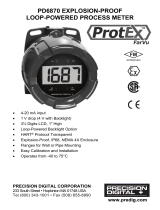 PRECISION DIGITAL PD6870 User manual
PRECISION DIGITAL PD6870 User manual
-
 PRECISION DIGITAL PD6801 User manual
PRECISION DIGITAL PD6801 User manual
-
PRECISION DIGITAL PD8-7000 ProtEX-MAX User manual
-
PRECISION DIGITAL PD8-6300 ProtEX-MAX User manual
-
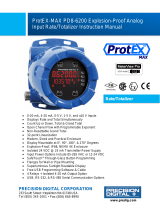 PRECISION DIGITAL PD8-6200 User manual
PRECISION DIGITAL PD8-6200 User manual
-
PRECISION DIGITAL PD8-765 ProtEX-MAX User manual
-
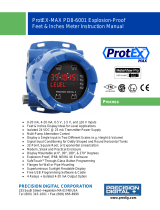 PRECISION DIGITAL ProtEX-MAX PD8-6001-7H7 User manual
PRECISION DIGITAL ProtEX-MAX PD8-6001-7H7 User manual
-
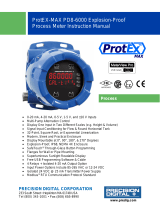 PRECISION DIGITAL PD8-6000 User manual
PRECISION DIGITAL PD8-6000 User manual
-
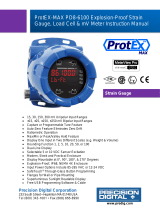 PRECISION DIGITAL PD8-6100 ProtEX-MAX User manual
PRECISION DIGITAL PD8-6100 ProtEX-MAX User manual
-
PRECISION DIGITAL PD8-6080 ProtEX-MAX User manual
Other documents
-
Velleman VMB8PBU Owner's manual
-
Dwyer Series AN2 User manual
-
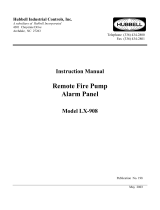 Metron/Metron-Eledyne HCLX-908 Installation guide
Metron/Metron-Eledyne HCLX-908 Installation guide
-
Hubbell LX908 User manual
-
AKO AKO-55326 Quick Manual
-
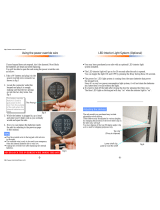 PROTEX DigiPaz-309 Programming And Operations Manual
PROTEX DigiPaz-309 Programming And Operations Manual
-
Apex Digital AIS750 Series User manual
-
Marathon GPN008 ATEX Owner's manual
-
KILLARK GZ Series Potentiometers Installation guide
-
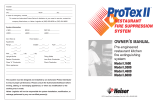 Heiser Logistics ProTex II L1600 Owner's manual
Heiser Logistics ProTex II L1600 Owner's manual
















































